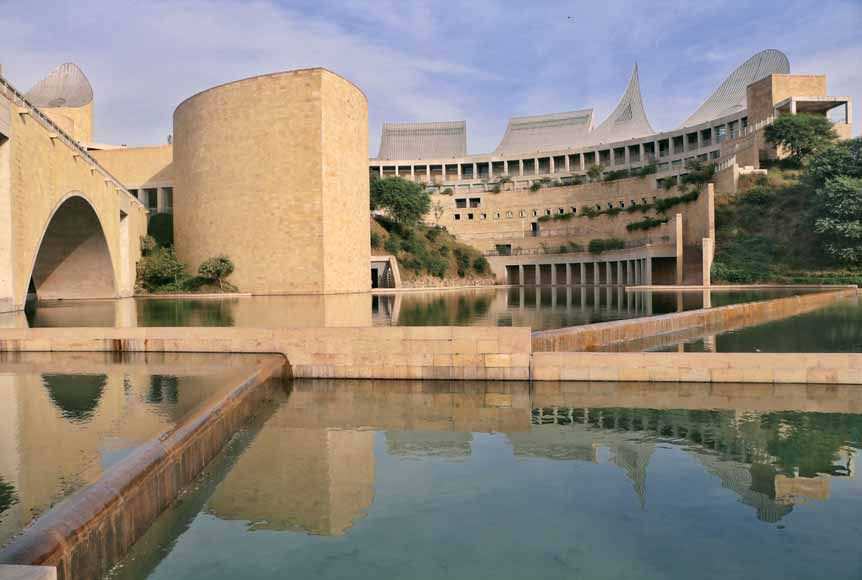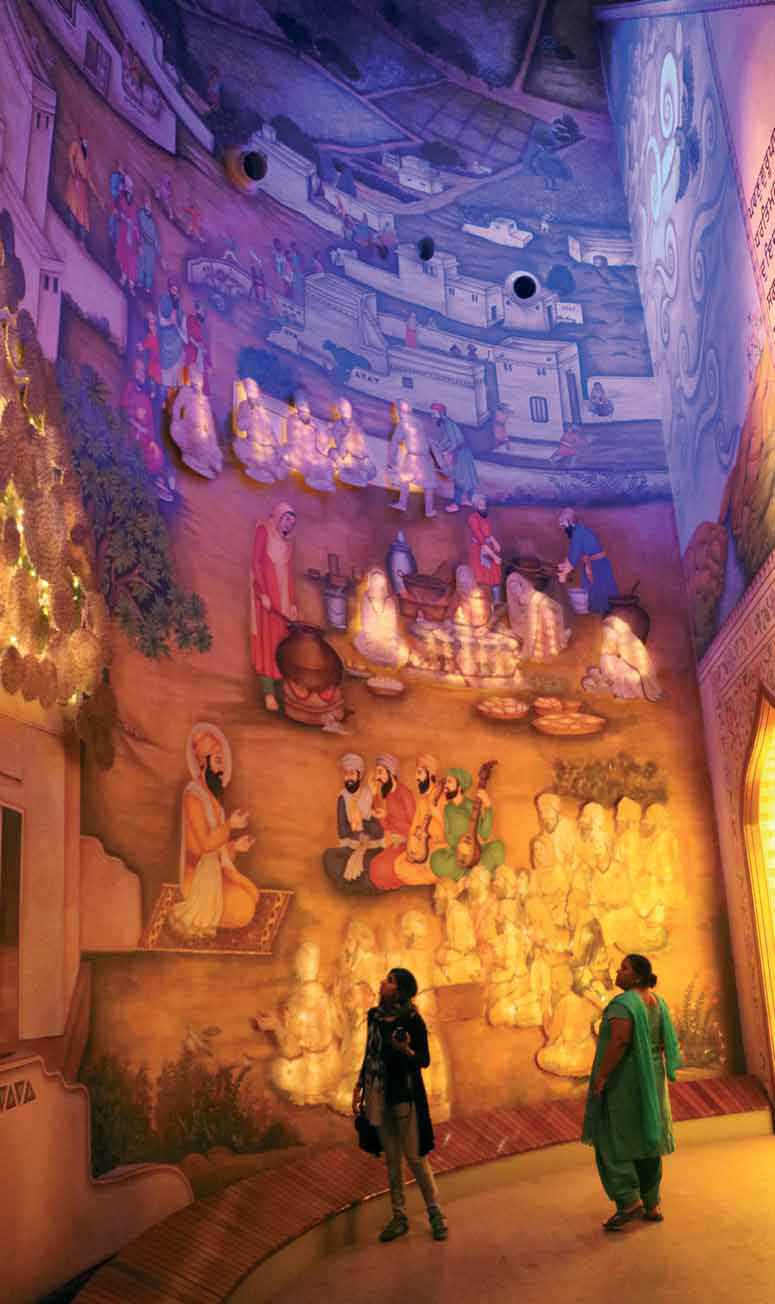Compositions Of Memory
Domus India
|January 2017
We take a photographic journey through Virasat-e-Khalsa Memorial in Chandigarh, designed by Moshe Safdie Architects; witnessing the composition of colossal forms and the various affective moments that manifest between these forms making the complex, ultimately, poetic. The multiplicity of scales across architectural elements and compositions invokes the simultaneous silence and turbulence of memories, enigmatically, throughout this building complex.

The most striking image of the Virasat- e – Khalsa Memorial by Moshe Safdie Architects, near Chandigarh, occurs when one looks across the reflecting pools to see the shard-like sandstone landforms rising up to meet the sky. It would seem as if the earth rose up in a moment of tectonic energy to reach out to the sky. While simultaneously, the reflections in the mirror-like surface of the water, constructs the chimera of the forms descending into the voids of the earth. This duality of images obscures the legibility of the ground plane as a datum of consequence; without which every reading of the project becomes affective and ephemeral. Situated on sand cliffs, the museum complex of the Khalsa Memorial consists of two clusters of programmatically integrated buildings connected by a 540 foot long bridge, which spans across a network of reflecting water bodies in between. The western complex that forms the gateway to Anandpur Sahib- houses the exhibition galleries, a library and a grand reading room, an auditorium as well as a storage for archival materials. Symbolism is built into the formal organisation of these buildings – five platonic cylinders form the galleries that represent the five virtues of the Sikhism. The Eastern complex houses the permanent exhibition galleries presenting Sikh history, religion and culture.

Cette histoire est tirée de l'édition January 2017 de Domus India.
Abonnez-vous à Magzter GOLD pour accéder à des milliers d'histoires premium sélectionnées et à plus de 9 000 magazines et journaux.
Déjà abonné ? Se connecter
Translate
Change font size

